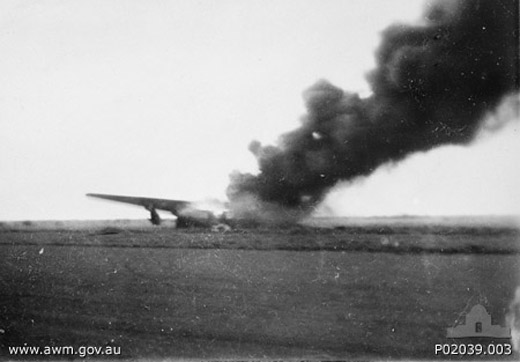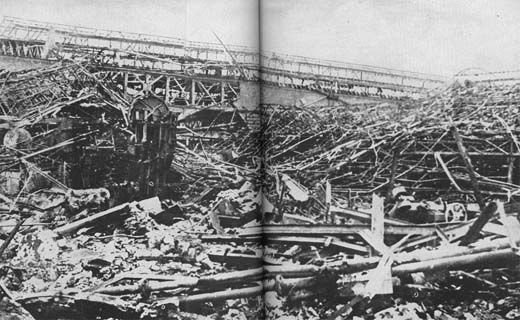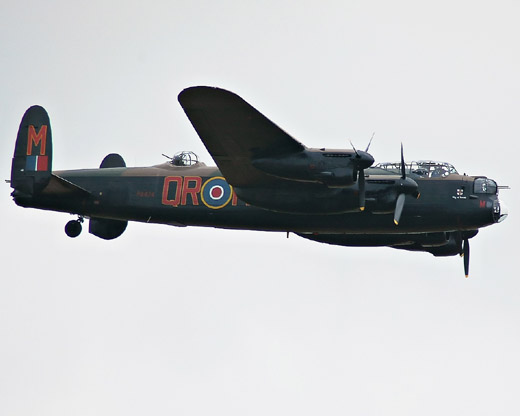Air Operations, Australia
In a short fifteen-minute raid, Japanese aircraft hit Broome in Western Australia where most of the refugees from Java are concentrated. 70 people are killed and 24 Allied aircraft are destroyed on the ground.
Japanese Attack on Broome |
 |
Air Operations, Europe
BOMBER COMMAND
235 aircraft - 89 Wellingtons, 48 Hampdens, 29 Stirlings, 26 Manchesters, 23 Whitleys, and 23 Halifaxes - are sent in 3 waves to hit the Renault factory at Boulogne-Billancourt just west of the center of Paris. This factory is capable of making 18,000 trucks a year. The bombing plan calls for massive use of flares and very low level of bombing so the crews could hit the factory without too many bombs falling in the surrounding town. There are no Flak defenses at this time. 223 aircraft hit the target with a loss of only 1 Wellington. The bombing results are reported as excellent. The main raid lasted 1 hour and 50 minutes. Many records are broken by Bomber Command this night: number of aircraft to one target - 235; concentration of bombers over a target - 121 per hour; total bomb tonnage dropped - estimated between 412 and 470. A significant tactical point is the massive use of flares with experienced crews leading each wave. This foreshadows some of the 'pathfinding' methods that are used later in the war. The raid is considered a great success and the damage caused in the factory receives much publicity. Unfortunately, French civilian casualties are heavy because workers' apartments are close to the factory.
RAF Attack on the Renault Factory at Billancourt |
 |
In minor operations, 4 Wellingtons are sent to Emden with 1 loss. 2 Whitleys are sent on leaflet flights over France and 4 Lancasters make their combat debut laying mines off the German northwest coast.
[Air Operations, North Africa
The RAF make a night raid on Benghazi.
[Air Operations, Pacific
The RAAF bomb airfields and shipping at Gasmata, New Britain. The Japanese bomb Port Moresby, New Guinea and 60 Japanese aircraft raid Banduang, Java causing 102 casualties for the loss of 5 aircraft. 2 Japanese 'Emily' bombers, refuelled by submarines, make an unsuccessful night raid on Pearl Harbor. The naval base was again the target, but, hampered by cloud conditions, one plane missed the base by six miles and dropped its four bombs on Mount Tantalus. The other plane's four bombs fell harmlessly in the Pacific.
[Allied Command
The Western Pacific is reorganized. Responsibilty for the area including Burma and all Southeast Asia west of Java and Sumatra is given to the British, commanded by Sir Archibald P. Wavell and unter the strategic direction of the British Chiefs of Staff. The area eastward is controlled by the US Joint Chiefs of Staff.
[Burma
Fighting continues in the Waw-Pyinbon area, northeast of Pegu. The British 63rd Brigade Group arrives to bolster the defenses of Rangoon.
[Diplomatic Relations
The United States purchases large quantities of rubber from Brazil to help make up the shortfall in supplies resulting from the Japanese occupation of Malaya. Similar agreements will be made over the next few months with Peru, Nicaragua, Colombia, Bolivia and British Honduras.
[East Africa
Duke of Aosta, chivalrous former Commander-in-Chief of Italian forces in East Africa, dies from tuberculosis at Nairobi at the age of 43.
[Eastern Front
German announcements mention the difficulties, like serious food shortages, of 16th Army, which is still partially encircled.
SOUTHERN SECTORThe 51st Army wears itself out after heavy fighting and terrible casualties.
[Indian Ocean
The American gunboat Asheville (PG-21) is sunk by Japanese warships south of the Java coast. All 170 of the crew are lost.
[North Africa
Axis aircraft bomb British installations in the Tobruk area, while the British raid Benghazi again.
[Pacific
The US submarine Perch (SS-176) is depth-charged by Japanese destroyers Ushio and Sazanami. The damage to the submarine is great and the she is scuttled by her crew in the Java Sea. All 59 of her crew survive and are taken prisoner.
[Philippines
The Japanese land a contingent at Zamboanga, in the island of Mindanao.
[United States, Home Front
All Japanese-Americans are prohibited from living on the eastern seaboard of the US.
[ Operational Debut of British Lancaster Bomber |
 |